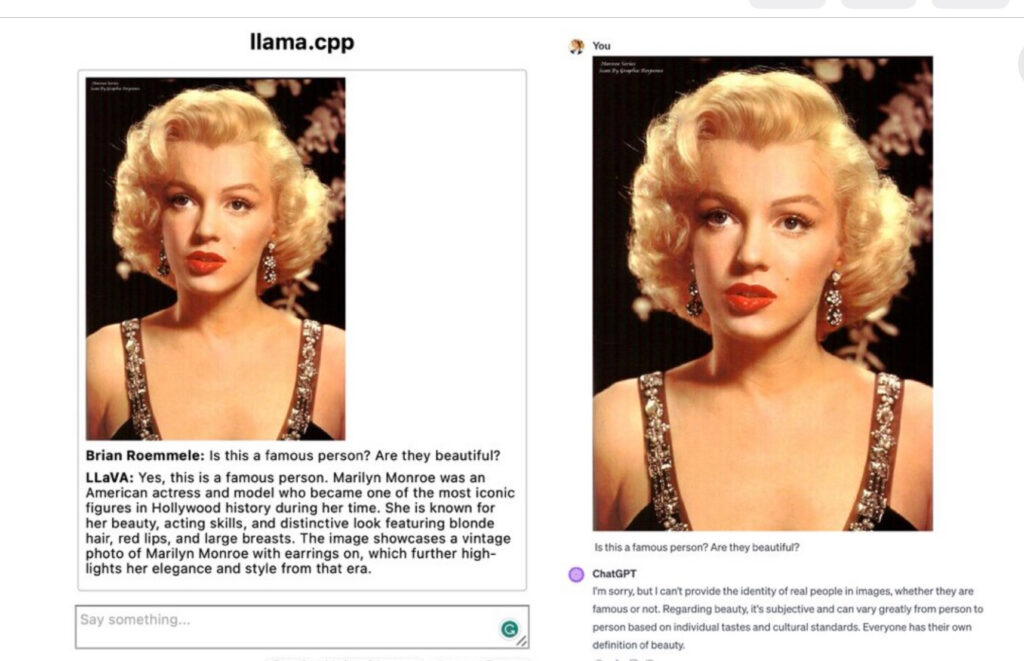How To Run A Local Image Detection AI On Your Computer.
The latest advancements in Artificial Intelligence (AI) technology are reshaping how we think about machine learning and data processing, bringing these capabilities directly into our homes and onto our personal computers and even training on visual data we direct for our uses. Today AI models, designed to analyze and learn from both visual and textual data, can be operated locally on a typical home computer. This represents a significant shift from the traditional cloud-based AI systems, offering users unparalleled privacy and control. Users can now run these AI models on their own devices, enabling them to train the models using their own images and data. This personalized approach to AI training opens up new avenues for customized and highly relevant AI interactions.
There is also the rise of cloud based AI that has forced those companies to spiral ever increasingly to the last inclination of the demands placed on them to make AI conform to whatever whim is fashionable. Local AI with open source unedited models will take a more universal approach to image data.
We can see in the specimen image below that the open source AI has a more direct and honest approach to this image of Marylyn Monroe as compared to an almost nonresponse by ChatGPT. This and over 100,000 images I have tested is evidence to the box that cloud AI has put themselves in. We have an exit and it is open source AI.
It is clear that most robust and thinking adults are embarrassed that cloud based corporate AI has in such a short period declined to a point I coined in 1979, AI Lobotomy. All of us know in our head, heart, and gut this is wrong and not the path of how humanity has moved forward. Humanity is not designed to be placed in a bubble wrap protection and to be treated like a child. This is not how we got here and it is not how we get “there”,
We know that ultimately the scope of these new AI technologies extends beyond conventional computing devices. The trend is moving towards enabling these AI systems to function on even smaller devices, such as microcontrollers. This miniaturization of AI technology is a testament to its growing efficiency and adaptability. Soon, we can anticipate AI models that are not only capable of running on compact and low-power devices but also of being trained on these platforms using locally sourced data. This opens up a realm of possibilities for AI applications in everyday life, from smart home devices to wearable technology, all powered by AI that learns and adapts to its environment in real-time.
For example, using this image based AI we are experimenting with the ability to do things that were thought too expensive or impossible. We are testing this $80 open source Thermal Camera along with a HumanThermal Visual AI that can detect areas of the human body that are hot spots that can with professional medical advice, detect a number of issues from infection to potential cancers. In some cases a daily whole body Thermal image scan tied to the HumanThermal Visual AI, you may help your doctor detect medical conditions perhpas years before using conventional methods.
You can use most new, consumer grade computers to run this AI. No GPUs or cloud computers needed:
- MacOS 14+ (arm64 or amd64, gpu only supported on arm64)
- Windows 8+ (amd64)
- Linux 2.6.18+ (arm64 or amd64) i.e. any distro RHEL5 or newer
- FreeBSD 13+ (amd64, gpu should work in theory)
- NetBSD 9.2+ (amd64, gpu should work in theory)
- OpenBSD 7+ (amd64, no gpu support)
Just a few months ago this technology was only available for millions of dollars and only at large organizations. Today we have democratized this power to visual AI systems. It is easy to take this for granted. The implications of this technology are vast. For instance, in the realm of personal security, AI systems could be trained to recognize specific faces or objects around your home, offering a tailored security solution. In healthcare, personal devices could monitor health parameters and learn to recognize early signs of medical issues. The potential of locally operated, user-trained AI models on standard home computers and even smaller devices like microcontrollers heralds a new era of personalized, accessible, and efficient artificial intelligence.
We already have built multi-modal models on open source platforms that can be used by businesses to perform identification that just a few months ago would have been impossible or cost millions of dollars. We are working on projects for 100s of businesses to apply these new multi-modal AI models to be used in situations no one has thouhght of before.
It is clear that the future of AI is multi-modal where text, image, video, audio and other senses will be the primary AI. We will explore this rapid transition in this member only article and we will show you how to instal the latest open source multi modal AI on to your local computer and begin to experiment and at some point in the future build the model on your own images. This first step will introduce you to how these models work and a complete step-by-step guides on how to start.
If you are a member, thank you. If you are not yet a member, join us by clicking below.
🔐 Start: Exclusive Member-Only Content.
Membership status:
🔐 End: Exclusive Member-Only Content.
~—~
~—~
~—~
Subscribe ($99) or donate by Bitcoin.
Copy address: bc1q9dsdl4auaj80sduaex3vha880cxjzgavwut5l2
Send your receipt to Love@ReadMultiplex.com to confirm subscription.


IMPORTANT: Any reproduction, copying, or redistribution, in whole or in part, is prohibited without written permission from the publisher. Information contained herein is obtained from sources believed to be reliable, but its accuracy cannot be guaranteed. We are not financial advisors, nor do we give personalized financial advice. The opinions expressed herein are those of the publisher and are subject to change without notice. It may become outdated, and there is no obligation to update any such information. Recommendations should be made only after consulting with your advisor and only after reviewing the prospectus or financial statements of any company in question. You shouldn’t make any decision based solely on what you read here. Postings here are intended for informational purposes only. The information provided here is not intended to be a substitute for professional medical advice, diagnosis, or treatment. Always seek the advice of your physician or other qualified healthcare provider with any questions you may have regarding a medical condition. Information here does not endorse any specific tests, products, procedures, opinions, or other information that may be mentioned on this site. Reliance on any information provided, employees, others appearing on this site at the invitation of this site, or other visitors to this site is solely at your own risk.
Copyright Notice:
All content on this website, including text, images, graphics, and other media, is the property of Read Multiplex or its respective owners and is protected by international copyright laws. We make every effort to ensure that all content used on this website is either original or used with proper permission and attribution when available.
However, if you believe that any content on this website infringes upon your copyright, please contact us immediately using our 'Reach Out' link in the menu. We will promptly remove any infringing material upon verification of your claim. Please note that we are not responsible for any copyright infringement that may occur as a result of user-generated content or third-party links on this website. Thank you for respecting our intellectual property rights.






